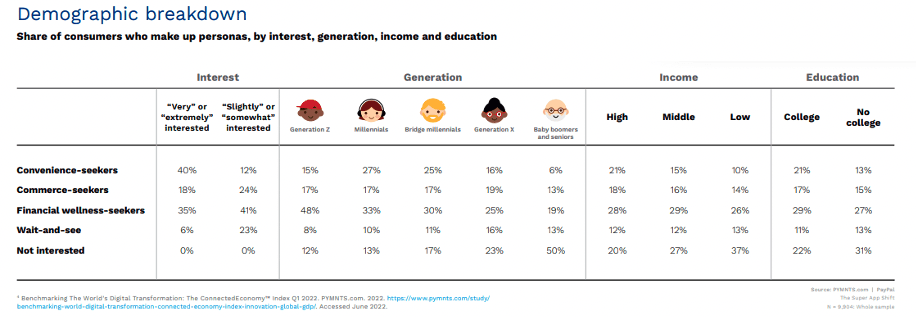Millennials Seek Convenience, Guidance From Financial Super Apps

The (continued) emergence of the super app carries a couple of questions along with it: Can the digital front door be all things to all people? And does it need to be?
That digital front door is the app that links together all manner of daily activities, from scheduling to shopping to booking ridesharing to paying for it all.
In “The Super App Shift: How Consumers Want to Save, Shop and Spend in the Connected Economy,” a PYMNTS and PayPal collaboration, the sentiments of more than 9,000 consumers across the United States, the United Kingdom, Germany and Australia showed overwhelming interest in a super app.
Taken as a whole, seven in 10 consumers said they would be interested in such an offering.
The readiness is there, as so many of us have mobile devices at the ready, which can enable the real time connections between all manner of providers, merchants, financial activities and commerce.
Differing Personas
But drill down a bit, and there are several different personas that take shape, and these personas dictate just what a particular demographic wants from a super app — and what they will use it for. Turns out that different people want different things from the app, depending on where they are in their life journeys.
The needs and interests of the millennials stand out because they have decades of earnings power and upward mobility in front of them. Nearly a third of them are “convenience-seekers” or “financial wellness-seekers.”
The convenience-seekers are the ones that want to mesh a series of seemingly disjointed activities into a fluid continuum. As for the financial wellness-seekers — well, herein lies a chance for the banks, payments providers and brokerages to leverage Big Data to be a bit proactive in helping millennials save and invest.
There are several conduits and channels through which these enterprises can reach millennials. There are “mainstream” tech users — and they use computers, smartphones, tablets, smart TVs and gaming consoles and own four devices on average. A bit more than a quarter of consumers here are millennials. But it turns out “integrated” tech users — with as many as seven to eight devices — are populated by millennials too, at 42% of this user group. These are the high-income users, indicating that the payoff can be substantial for the companies that get it right.
